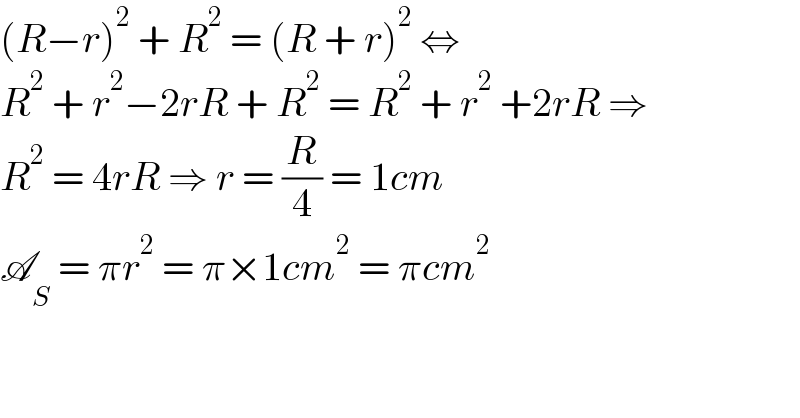Question Number 150793 by cherokeesay last updated on 15/Aug/21
Commented by Rasheed.Sindhi last updated on 15/Aug/21
Commented by cherokeesay last updated on 15/Aug/21
the answer to this problem has already been processed by a member (see below) what I have established is my own resolution of this same exercise but accompanied by a diagram! that's all ! good to you.





